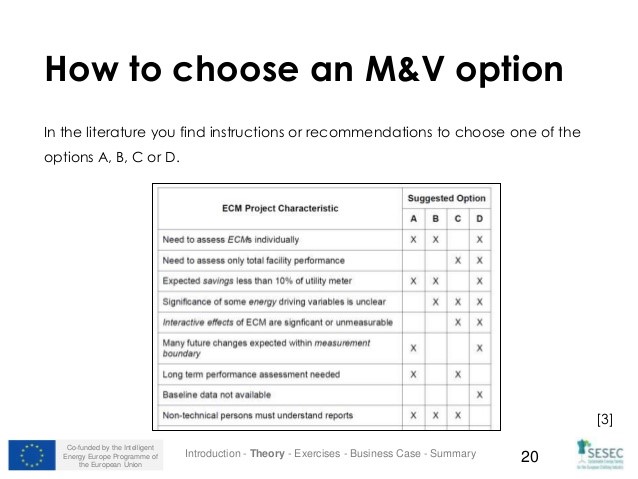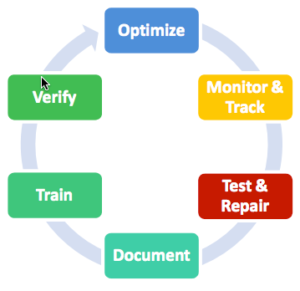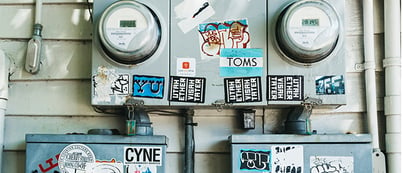The world energy consumption is constantly rising. According to the US Energy Information Administration, the increase is well over 28% between 2015 and 2040.
It is important to note that in commercial buildings, this number is even higher at nearly 40%.
Add to this the pressure exerted by government agencies about depleting energy supplies and global climate change. To meet this demand everyone who uses energy – residential or commercial building and industries have to prioritize reduction in energy consumption.
It is not surprising that energy efficiency is the goal of every commercial building, both in the US as well as internationally.
Reducing energy costs and increasing energy efficiency is not only useful for improving building operations but also to address concerns about environmental impact of energy consumption and ensure sustainable building environment.
In the words of the G8 Clean Energy and Development Report; “Improving end-use efficiency offers the greatest opportunity to address energy security, price and environmental concerns”
The value of energy efficiency goes well beyond the benefits of reduced energy costs.
Other benefits include improved air quality, reduced pollution and increased energy access for everyone.
Hence building owners, facility managers and building control engineers must adapt strategies, performance metrics and technology to attain the value of energy efficiency and strive to become a green building.
In this article we will take a look at various energy-saving approaches along with their advantages and disadvantages.
In particular we will be looking at 1. The traditional approach of Measurement and Verification (M&V) and compare it with the more modern 2. Ongoing Commissioning process.
Measurement and Verification (M&V) Process:
What is M&V Process?
Measurement and Verification process has been a best practice for quantifying the results energy efficiency investments since early ‘90s. The purpose of this method is to determine if investments made in energy efficiency projects (time, money and efforts) provide the appropriate results. The projects can include various renovations, facility improvement or operational changes. These projects are either implemented by a building owner or through third parties, such as energy
service providers, equipment manufacturers, financial service providers and utilities.
As per the “U.S. Green Building Council Leadership in Energy and Environmental Design (LEED)”, the intent of measurement and verification is to “provide for the ongoing accountability of building energy consumption over time.”
M&V is also the standard process for any energy-related government incentive programs or utility rebate programs.
This is the most common approach for the energy-industry to understand that the policies, procedures around energy implementation in a building are providing the necessary results.
It is used to 1. Verify savings, 2. Report against targets and metrics in the building control systems and 3.test which energy conservation techniques work and which do not.
How is M&V used?
M&V (measurement and verification) are performed on-site and take into account various engineering methods and calculations.
The basic premise of M&V is to setup baselines before any energy efficiency process and measure consumption and demand after the implementation. This will determine the best path to reduce the energy consumption in a building.
A typical M&V plan include the following:
1. Goals and KPIs (Key performance indicators) such as expected energy, cost and carbon emission savings.
2. Characteristics of the facility, systems and measuring and monitoring devices
3. Factors affecting energy consumption (e.g., weather, altitude etc.)
4. Baseline performance metrics (e.g., Flows, temperature, hours of operation)
5. Sampling protocols
The commonly used protocol is the International Performance Measurement and Verification Protocol (IPMVP). There are 4 different options for M&V:
A. Partial Retrofit Isolation: Energy consumption is both measured and estimated.
B. Retrofit Isolation: Usage is measured.
C. Entire building: Energy usage of the whole building is measured.
D. Calibrated Simulation: Computer modeling and building performance simulation is used to predict energy consumption.
The below table from SESEC is a guide to help you determine which option to pick.

There are several benefits when Measurement and Verification (M&V) is done correctly.
1. Recommendations for facility operations and maintenance: A good M&V helps facility managers discover operating problems.
2. Enhance financing of energy efficiency projects: A good M&V provides reports on the results of efficiency investments.
3. Demonstrate compliance with energy reduction policy and regulations: Use of M&V increases the reliability of emissions-reduction report. These reports might qualify for government incentive programs.
While the use of M&V is very popular and provides substantial benefits to building performance and sustainability, if done correctly, there are some disadvantages that are inherent to a dated process.
1. High probability of inaccuracy: Since there are multiple parameters to measure, evaluate and verify, there is a high change of inaccurate reporting. Add to this the complexity of factors driving the energy usage. (e.g., weather, power shutdowns, humidity etc.)
2. Passive evaluation process: The output of this lengthy and complicated process are reports that would at best suggest which building facilities need to be maintained or tuned for increase efficiency. At best they can provide building performance simulation for design and operation. What it fails to achieve is an active alert of which systems need to be replaced immediately and what is the ongoing wear and tear of systems.
3. Slower energy efficiency process: Obtaining baseline and measuring current readings, creating simulations as well as analyzing everyday costs is a time-consuming activity. While the M&V activity is ongoing there are multiple systems in the building that need to be adjusted and maintained or replaced and these have to wait for the process to be completed. This is not the best method to obtain information fast enough to take action.
What is Building Commissioning?
Now let us take a look at another growing specialty in energy efficiency area – Building Commissioning (Cx). As per The Commissioning Process for Buildings and Systems building commissioning is defined as “A quality-focused process for enhancing the delivery of a project. The process focuses upon verifying and documenting that all of the commissioned systems and assemblies are planned, designed, installed, tested, operated and maintained to meet the Owner's Project Requirements (OPR)."
In short, commissioning ensures that the goals of the building energy systems are being fulfilled. The most common systems to use building commissioning are:
• Heating, ventilation, air-conditioning (HVAC) systems and controls
• Electrical power and lighting systems
• Gas systems
• Hot water systems
• Renewable energy (solar photovoltaic, geothermal, wind, etc.) systems
 Ongoing or Continuous Commissioning (OCx) is one of the popular types of Commissioning. This type of commissioning (CX) involves ongoing monitoring and automated processes that collect data. The data is collected from Building Automation Systems (BAS) and Building Energy Management Systems (BAMS). The data is fed through dedicated meters and sensors. The data that is obtained is analyzed and reported so that performance issues can be immediately fixed.
Ongoing or Continuous Commissioning (OCx) is one of the popular types of Commissioning. This type of commissioning (CX) involves ongoing monitoring and automated processes that collect data. The data is collected from Building Automation Systems (BAS) and Building Energy Management Systems (BAMS). The data is fed through dedicated meters and sensors. The data that is obtained is analyzed and reported so that performance issues can be immediately fixed.
How is Ongoing Commissioning performed?
The growth and development of buildings and its consumption of natural resources has direct impact on our communities and environment. This also affects the socio-economic growth and sustainability. Hence green building projects have become very important. Green building is the practice of increasing the energy efficiency in buildings thereby reducing impacts on human health and the environment.
The adoption of green practices has led to the advent of latest technologies, enabling automation in managing buildings as well as integration of all the energy consuming systems. These are called Building Automation Systems (BAS). They help in enabling data collection, automating controllers and ensuring that software is integrated.
But the most important aspect of the building automation system components is ensuring that the goals of the system are met and it is maintained constantly while ensuring breakdowns and down-time are minimal. Ongoing Commissioning is the most important process that helps buildings achieve this goal.
There are 4 implementation steps in Ongoing commissioning:
1. Benchmarking – Baseline the building’s actual performance
2. Monitoring and reporting – Measure the ongoing data from various energy devices
3. Improve building performance – Take action on activities impacting the KPIs(Key performance indicators)
4. Continuous improvement – Take ongoing corrective action for operational excellence in building maintenance management.
The most important step in Ongoing Commissioning is performance tracking. This involves:
1. Software to monitor and track the data and the systems
2. Alerting systems to send notifications in case of issues
3. Diagnosing the problem and implementing solutions to fix the problems
Benefits of ongoing commissioning:
1. Achieve substantial energy savings by continuous improvement of equipment.
2. Predictive maintenance reduces energy consumption as opposed to reactive or time based maintenance.
3. Time taken to fix a problem is drastically reduced due to it’s standardized format that is accessible to every member of the energy maintenance team.
4. When combined with advanced analytic tools, it can easily facilitate a smart building solution.
Challenges in implementing ongoing commissioning:
1. Technology implementation, which is accompanied by organization culture, change management and training.
2. Initial investment in time, money and effort to implement tools and technology. It is seen that this is usually that is offset by long-term benefits.
Conclusion:
In conclusion, energy efficiency is the number one priority of every property owner. The goal of reducing operating costs of energy, reduced energy consumption; increased energy savings as well as increase environmental sustainability is at the forefront of all buildings. This can be achieved through various means.
While Measurement and Verification is the age old tried and tested process to quantify and measure your building energy efficiency programs, newer methods are proven to be more effective in long-term economic performance of a building’s operating system and equipment.
Ongoing Commissioning (OCx) is becoming the industry best practice in maintaining the intricate and complex systems found in today’s buildings. OCx is the process that helps building management systems are optimized for peak performance and avoid hidden energy consumption.
Are you looking for a modern alternative to data loggers? Download our webinar.





